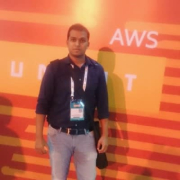

AWS Elastic Disaster Recovery and NetApp Cloud Volumes ONTAP are key players in disaster recovery and cloud storage management, with users favoring AWS for its pricing and support and NetApp for its advanced features.
Features: AWS Elastic Disaster Recovery is noted for instant block replication, a pay-as-you-go pricing model, and live block verification. NetApp Cloud Volumes ONTAP excels in data management, file-sharing capabilities, and high availability, with features like Snapshots and SnapMirror.
Room for Improvement: AWS Elastic Disaster Recovery could enhance automation, logging, and replicated data management support. NetApp Cloud Volumes ONTAP requires simpler navigation, better RAID-level protection, and improved cloud integration.
Ease of Deployment and Customer Service: AWS Elastic Disaster Recovery is versatile, enabling quick deployment on various cloud types, with generally high customer support. NetApp Cloud Volumes ONTAP provides strong cloud integration but has a complex feature set that can complicate deployment; customer service is highly rated with room for improved ticketing.
Pricing and ROI: AWS Elastic Disaster Recovery, seen as expensive, offers a high ROI with flexible pricing models supporting scalability and cost savings. NetApp Cloud Volumes ONTAP, while costlier, is praised for its advanced features and enterprise pricing strategies, though users seek more flexible licensing.
However, with AWS Elastic Disaster Recovery Service being a native service, integration is seamless, highlighting the return on investment.
In case of any issue, they are ready to provide support within the defined SLA timeline.
It is very good and very reliable.
AWS is not difficult, but the cost associated with replicating data to another region can be significant.
This would detail user activity directly in the ACL console for easier debugging and auditing.
In AWS Disaster Recovery Service, these details are not available, making it difficult to check my replication status.
My opinion is that support is generally very good. There are instances where they take longer to respond or resolve issues, especially when customers have urgent needs, but ultimately, resolution is achieved.
AWS Elastic Disaster Recovery Service is a native service, integration is seamless.
| Product | Market Share (%) |
|---|---|
| NetApp Cloud Volumes ONTAP | 0.7% |
| AWS Elastic Disaster Recovery | 1.2% |
| Other | 98.1% |


| Company Size | Count |
|---|---|
| Small Business | 5 |
| Midsize Enterprise | 4 |
| Large Enterprise | 7 |
| Company Size | Count |
|---|---|
| Small Business | 7 |
| Midsize Enterprise | 11 |
| Large Enterprise | 53 |
CloudEndure Disaster Recovery enables real-time replication and rapid recovery to enhance organizational resilience. Key features include block-level data replication, ease of use, cost-effectiveness, and automated recovery orchestration. Users benefit from increased efficiency, improved workflows, and enhanced data management, significantly improving organizational performance and business continuity.
NetApp Cloud Volumes ONTAP is an efficient storage management solution for managing and storing data in the cloud. It offers seamless integration with cloud providers, advanced data replication capabilities, and high data protection. With reliable performance, it is ideal for industries like healthcare and finance.
We monitor all Cloud Backup reviews to prevent fraudulent reviews and keep review quality high. We do not post reviews by company employees or direct competitors. We validate each review for authenticity via cross-reference with LinkedIn, and personal follow-up with the reviewer when necessary.